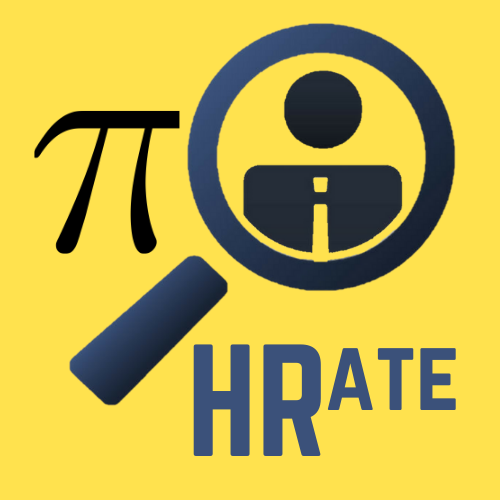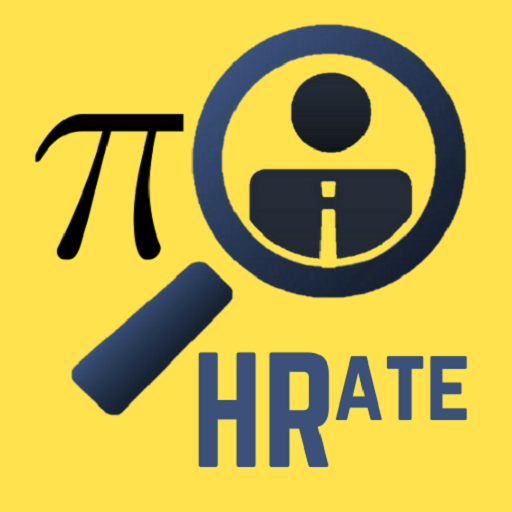Data Structures & Algorithms Cheat Sheet: Acing the Meta Coding Interview (Top 10 Patterns)

Introduction: The High Stakes of the Technical Screen
You’ve landed the email. The one from a top-tier company—be it Meta, Google, Amazon, or a fast-scaling unicorn. The next hurdle is the Coding Interview, often referred to as the technical gauntlet. This isn’t just a test of your theoretical knowledge; it’s a high-pressure Technical Screen designed to evaluate your problem-solving process, communication skills, and ability to optimize algorithms under stress.
For years, candidates have tried to memorize solutions to hundreds of problems. But seasoned engineers know the secret: success in the Coding Interview doesn’t come from memorizing code, but from recognizing underlying DSA (Data Structures and Algorithms) Patterns.
This ultimate DSA Cheat Sheet breaks down the ten most frequently tested patterns that consistently show up in Big Tech Coding Interview cycles. Mastering these will transform you from someone struggling to find a solution to someone who can confidently identify the optimal path within minutes, significantly boosting your performance in the crucial Technical Screen. Let’s dive into the core patterns that will help you ace the next level of your career.
Section 1: Why Focus on DSA Patterns?
When you encounter a new problem in a Coding Interview, your brain needs an instant classification system. Is this a graph problem? A sorting problem? Or a simple array manipulation task?
The beauty of DSA Patterns is that they act as mental frameworks. Instead of thinking, “How do I solve this specific problem?” you learn to think, “This problem looks like a ‘Sliding Window’ problem,” and immediately recall the optimized template. This approach drastically reduces the time spent fumbling for a starting point, which is critical when the clock is ticking during a high-stakes Technical Screen.
Understanding these core DSA concepts will not only help you pass the initial screen but also prepare you for the follow-up rounds, including the behavioral and systems design portions, as they demonstrate strong foundational knowledge.
Section 2: The Top 10 DSA Interview Patterns Cheat Sheet
Here are the essential DSA Patterns you must master for any competitive Coding Interview.
Pattern 1: The Sliding Window
| When to Use | Key Concept | Complexity (Optimal) |
|---|---|---|
| Arrays, Strings, or Linked Lists where you need to find the best contiguous sub-array, sub-string, or range. | Maintains a dynamically sized window (usually using two pointers) to perform calculations on a subset of data in $O(N)$ time. | Time: $O(N)$, Space: $O(1)$ or $O(K)$ |
Core Logic: The Sliding Window technique is ideal for optimizing $O(N^2)$ brute-force solutions down to linear time. You typically use two pointers, start and end. The end pointer expands the window, and when the window violates a constraint (e.g., sum is too large, too many unique characters), the start pointer contracts it until the constraint is met again.
Crucial Identification: Look for keywords like “longest contiguous subarray,” “shortest substring containing X,” or “maximum sum of a fixed size K subarray.” This is a foundational technique often used in the first Technical Screen.
Common Problems: Longest Substring Without Repeating Characters, Maximum Sum Subarray of Size K, Minimum Window Substring.
Pattern 2: Two Pointers (Fast & Slow, or Opposite Direction)
| When to Use | Key Concept | Complexity (Optimal) |
|---|---|---|
| Sorted arrays, linked lists, or problems involving finding pairs/triplets, or modifying lists in place. | Uses multiple pointers to reduce the need for nested loops, often converting $O(N^2)$ problems to $O(N)$. | Time: $O(N)$ or $O(N \log N)$ if sorting is required. |
Core Logic:
- Opposite Direction Pointers: Used mainly in sorted arrays. Pointers start at opposite ends (start=0, end=N-1) and move inward based on the comparison of the elements they point to. Perfect for problems like two-sum (if the array is sorted).
- Fast & Slow Pointers (The Runner Technique): Used primarily in linked lists. The “fast” pointer moves at twice the speed of the “slow” pointer. This is essential for detecting cycles or finding the middle element of a list. A crucial DSA concept.
Crucial Identification: Problems involving sorted data structures, finding specific combinations (pairs/triplets), or detecting cycles in linked lists. Mastery of this pattern is non-negotiable for the Coding Interview.
Common Problems: Two Sum (on a sorted array), Removing Duplicates from a Sorted Array, Detecting a Cycle in a Linked List (using Fast & Slow).
Pattern 3: Merge Intervals
| When to Use | Key Concept | Complexity (Optimal) |
|---|---|---|
| Handling overlapping or adjacent time ranges or numerical intervals. | Sort the intervals based on the starting point, then iterate, merging overlapping ranges sequentially. | Time: $O(N \log N)$ due to sorting. |
Core Logic: Before processing, the input array of intervals must be sorted by the start time. You then iterate, comparing the current interval’s start time with the previous interval’s end time. If the current start is less than or equal to the previous end, they overlap, and you merge them by updating the end time to the maximum of the two ends.
Crucial Identification: Any problem that describes events, schedules, or ranges, and asks you to find overlaps, gaps, or unions. A common question during the Technical Screen to test array manipulation skills.
Common Problems: Merge Overlapping Intervals, Insert Interval (and merge if necessary), Finding conflicts in appointment scheduling.
Pattern 4: Cycle Sort (For Specific Array Constraints)
| When to Use | Key Concept | Complexity (Optimal) |
|---|---|---|
| When dealing with an array containing numbers in a specific range, often $1$ to $N$, and you need to find missing, duplicate, or smallest elements. | Place each element in its correct index (e.g., the number ‘3’ goes to index 2) using swaps, thus optimizing in-place operations. | Time: $O(N)$, Space: $O(1)$ |
Core Logic: Cycle Sort iterates through the array and checks if the element at index i is the correct element for that spot. If not, it swaps the element into its correct position. The beauty is that while swapping, the number of total swaps remains close to $N$, achieving $O(N)$ time complexity without auxiliary space.
Crucial Identification: Look for constraints like “the array contains $N$ numbers from $1$ to $N$” or “find the duplicate/missing number in $O(N)$ time and $O(1)$ space.” This is a highly specialized, high-leverage DSA trick.
Common Problems: Find the Missing Number, Find the Duplicate Number, Find all Duplicate Numbers in an array.
Pattern 5: Two Heaps (Priority Queues)
| When to Use | Key Concept | Complexity (Optimal) |
|---|---|---|
| Problems requiring efficient access to the smallest or largest elements, especially when managing an ordered sequence or stream of data. | Uses one Min-Heap and one Max-Heap to maintain two balanced parts of a collection, enabling $O(1)$ access to the median or $K$-th largest element. | Time: $O(\log N)$ for insertion/removal. |
Core Logic: The two heaps are used to partition the data set. The Max-Heap stores the smaller half of the numbers, and the Min-Heap stores the larger half. The Max-Heap’s root gives the largest number of the small set, and the Min-Heap’s root gives the smallest number of the large set. By keeping their sizes balanced (or differing by one), the median or middle elements are instantly available at the roots.
Crucial Identification: Anytime a problem asks for the median of a stream of numbers, or involves finding the K-th largest/smallest element dynamically. This advanced DSA technique is a common feature in competitive Coding Interview questions.
Common Problems: Find the Median of a Number Stream, Managing the schedule of tasks/events based on priority.
Pattern 6: Breadth-First Search (BFS) for Trees and Graphs
| When to Use | Key Concept | Complexity (Optimal) |
|---|---|---|
| Finding the shortest path (unweighted graph), level-order traversal, or exploring all neighbors equally. | Uses a Queue to systematically visit nodes layer by layer (level by level). | Time: $O(V + E)$, Space: $O(V)$ |
Core Logic: BFS guarantees the shortest path in terms of the number of edges because it checks all nodes at distance $k$ before moving to any node at distance $k+1$. The Queue ensures FIFO (First-In, First-Out) processing, which maintains the level order.
Crucial Identification: Look for “shortest path,” “minimum number of jumps/edges,” or “level order traversal.” Graph traversal questions are almost guaranteed in a high-level Technical Screen. The common application in DSA is trees, where BFS translates to level order traversal.
Common Problems: Level Order Traversal of a Binary Tree, Finding the Shortest Path in a Maze or Grid, Connect all Level Siblings.
Pattern 7: Depth-First Search (DFS) for Trees and Graphs
| When to Use | Key Concept | Complexity (Optimal) |
|---|---|---|
| Tree traversal (Inorder, Preorder, Postorder), path-finding, checking connectivity, and backtracking. | Uses a Stack (or implicit recursion stack) to dive as deep as possible down a single path before backtracking. | Time: $O(V + E)$, Space: $O(V)$ |
Core Logic: DFS is crucial for problems requiring exploration of the entire structure before making a decision (like finding all possible paths). It’s also the engine behind the powerful Backtracking Pattern (Pattern 10). DFS usually utilizes recursion, making the code concise but requiring careful handling of base cases and the recursive step.
Crucial Identification: Problems asking for “all possible paths,” “valid combinations/permutations,” or complex connectivity checks. DFS mastery is a cornerstone of success in the Coding Interview.
Common Problems: Validating a Binary Search Tree (BST), Finding all paths from root to leaf, Topological Sort (using DFS).
Pattern 8: Modified Binary Search (Beyond Sorted Arrays)
| When to Use | Key Concept | Complexity (Optimal) |
|---|---|---|
| Any problem space that is monotonically increasing or decreasing, or involves finding boundaries, peaks, or minimum difference targets. | Modifies the standard Binary Search to handle rotated arrays, search in unbounded arrays, or find specific ceiling/floor indices. | Time: $O(\log N)$ |
Core Logic: Standard Binary Search finds a target value in a sorted array. The modified pattern applies this $O(\log N)$ efficiency to complex scenarios. Instead of searching for a value, you might search for the index where an array breaks its sorted property (like in a Rotated Sorted Array) or search the answer space itself (e.g., finding the minimum possible maximum capacity needed for trucks).
Crucial Identification: If the data set is sorted, or if you can determine whether the optimal answer lies in the left half or the right half of the solution space, Binary Search is often the optimal DSA choice.
Common Problems: Search in a Rotated Sorted Array, Finding the ceiling or floor of a number, Finding the Peak Element, Binary Search on the Answer (e.g., Split Array Largest Sum).
Pattern 9: Dynamic Programming (DP)
| When to Use | Key Concept | Complexity (Optimal) |
|---|---|---|
| Optimization problems where optimal substructure and overlapping subproblems exist. | Stores the results of subproblems to avoid redundant recalculations (memoization/tabulation). | Time: Usually $O(N)$ or $O(N^2)$, Space: Usually $O(N)$ or $O(N^2)$ |
Core Logic: DP is the hardest yet most rewarding pattern in the Coding Interview. It transforms exponential brute-force recursive solutions into polynomial ones. The three steps are:
- Define the State: What does
DP[i]orDP[i][j]represent? - Formulate the Recurrence Relation: How does the solution to the current state depend on previous states?
- Establish Base Cases: The starting points of your recursion or table filling.
Crucial Identification: Keywords like “maximum profit,” “minimum cost,” “number of ways,” “longest subsequence,” or “optimize a path.” If a recursive solution involves solving the same subproblems repeatedly, DP is the solution. Mastering DP is often the differentiator between a pass and a fail in the Meta or senior-level Technical Screen.
Common Problems: Fibonacci Sequence (classic intro), Longest Common Subsequence, Knapsack Problem (0/1), Coin Change Problem.
Pattern 10: Backtracking (Advanced DFS)
| When to Use | Key Concept | Complexity (Optimal) |
|---|---|---|
| Finding all permutations, combinations, or sub-sets that satisfy a specific constraint. | Uses recursion (DFS) to explore every potential path, but prunes (stops) paths early if they violate constraints. | Time: Exponential, often $O(N \cdot 2^N)$ or $O(N!)$ |
Core Logic: Backtracking is fundamentally depth-first search where you “make a choice,” “explore that choice recursively,” and then “undo the choice” (backtrack) to try the next option. Because the goal is to find all valid solutions, the time complexity is inherently higher, but the technique is powerful for constrained searches.
Crucial Identification: Problems asking for “all permutations,” “all subsets,” “valid arrangements,” or solving configuration puzzles (like N-Queens or Sudoku Solver). Recognizing the need for backtracking versus standard array manipulation is key during the Technical Screen.
Common Problems: Finding all Subsets of a Set, Permutations of a String, N-Queens Problem, Combination Sum.
Section 3: Integrating the Cheat Sheet into Your Coding Interview Prep
Having this DSA Cheat Sheet is step one. Step two is practicing its application. When tackling a mock Coding Interview problem, don’t just jump into code. Use the following mental checklist:
- Analyze the Input/Output: Is it an array, a string, a tree, or a graph? Is the array sorted? Are we dealing with time ranges?
- Identify the Constraint/Goal: Are you looking for the longest thing (Sliding Window/DP)? The shortest path (BFS)? All possibilities (Backtracking/DFS)?
- Pattern Mapping: Which of the Top 10 patterns fits best?
- Contiguous Subarray? -> Sliding Window (Pattern 1).
- Cycle Detection or Sorted Array Pairs? -> Two Pointers (Pattern 2).
- Optimization with overlapping subproblems? -> Dynamic Programming (Pattern 9).
- Shortest path on an unweighted graph? -> BFS (Pattern 6).
- Complexity Check: Can you do better than $O(N^2)$? If your solution is brute force, look for a way to use Two Pointers, Sliding Window, or Binary Search to hit the desired $O(N)$ or $O(\log N)$ complexity required for the typical Technical Screen.
The Meta/FAANG Mindset
Top companies like Meta (formerly Facebook) aren’t just looking for a correct answer; they are looking for optimization and clarity. They want to see you start with a brute-force approach, identify its flaws, and then pivot to one of these optimized DSA Patterns. Communicate your pattern recognition explicitly during the Coding Interview. Saying, “I recognize this as a Sliding Window problem, which will optimize the time complexity to $O(N)$,” demonstrates exceptional skill and confidence.
Conclusion: Acing the Technical Screen
The journey to acing the Meta Coding Interview or any competitive Technical Screen is challenging, but not insurmountable. By moving away from rote memorization and adopting the DSA Patterns outlined in this ultimate Cheat Sheet, you equip yourself with the tools necessary to break down complex problems into manageable, familiar chunks.
Mastering these ten DSA frameworks guarantees that when you face the pressure of the live Coding Interview, you won’t freeze. Instead, you will have a clear, optimized strategy ready to implement. Start practicing these patterns today, and you will dramatically increase your chances of success and land that dream job. Good luck!



